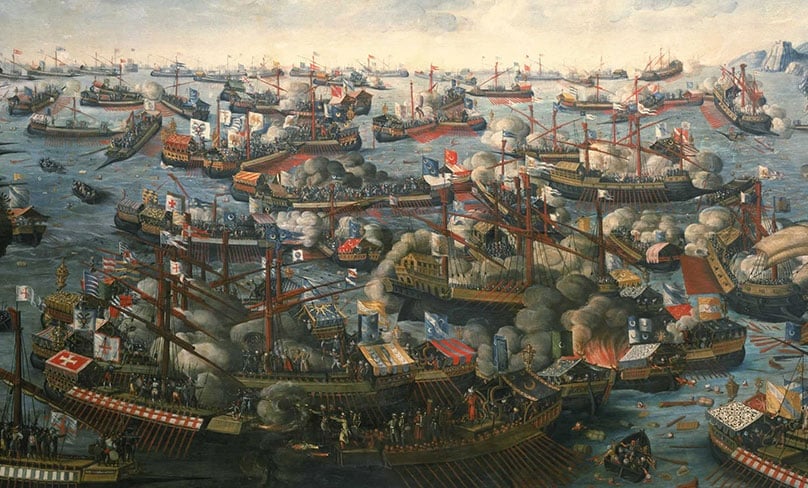
“Dear Father, I have read that victory in the battle of Lepanto in the sixteenth century has been attributed to the saying of the rosary. Can this be possible?”
It is most certainly the case. Victory in the battle of Lepanto in 1571 undoubtedly changed the course of history, ending the Ottoman Turks’ domination of the Mediterranean, and it has always been attributed to the saying of the rosary.
As we may recall, in 1453 the Ottoman Turks captured Constantinople, the Eastern centre of the Church, and later they took much of the Balkans, Hungary and Romania. In 1566 Selim II became Sultan of the Turks and he set out to achieve what his great-grandfather had vowed to do: capture Rome and stable his horses beneath the dome of St Peter’s basilica.
He captured Nicosia in Cyprus in 1570 and raided the islands off Venice in 1571, getting ever closer to Rome. This moved Pope St Pius V to call for an army to defeat the Turks. The army and fleet came largely from Spain and Venice and were under the command of the 24 year-old Don Juan of Austria, son of the Emperor Charles V.
Don Juan gave instructions that there was to be no blasphemy on the ships and all the men were to fast for three days. There were priests on the ships to say Mass and hear confessions and all the men were given a rosary. Before setting sail all the men prayed the rosary, led by Don Juan himself. The fleet finally sailed out of Messina in Sicily on 16
September 1571. Meanwhile in Rome Pope St Pius V, who had standardised the rosary in its present form in 1569 and was very devoted to it, asked for churches to remain open day and night so that the faithful could pray the rosary for the success of the campaign. The people of Rome and the surrounding area heeded the request, as did those in the monasteries and convents of religious.
On the evening of 6 October 1571, which was in fact the eve of the decisive battle, Pope Pius himself led the rosary in the Dominican convent of Santa Maria Sopra Minerva in Rome, entrusting this most important cause to the powerful intercession of Our Lady. On the following day, 7 October, the Christian fleet encountered the Turkish fleet in the Gulf of Patrakas off the coast of Greece near the city of Lepanto.
The fleet of the Holy League, as it was called, was heavily outnumbered by the Turks. Estimates vary considerably but the Turkish fleet had close to three hundred vessels and the Christians something over two hundred. The Turks had around 100,000 soldiers and sailors while the Holy League had some 70,000. It should be known that naval battles at that time were fought largely by the opposing ships ramming each other and the soldiers then fighting hand-to-hand on the decks.
The battle lasted some five hours and its outcome was decided when the flagships of both fleets engaged each other, Ali Pasha’s Sultana ramming Don Juan’s Real. In the ensuing battle on the decks of both ships Ali Pasha was killed and the Sultana was taken in tow by the Real. The Holy League sank or burned some 50 Turkish galleys and captured another 117 along with many thousands of men.
They liberated some 15,000 Christians who were galley slaves on the Turkish ships. In turn they lost 12 galleys and had some 8000 wounded, among them Miguel de Cervantes, the author of Don Quixote. After that decisive battle the Turkish fleet was no longer a threat in the Mediterranean.
On the very evening of the battle Pope Pius was in a meeting in Rome when he suddenly got up, looked out the window and had a vision that the battle had been fought and won. He turned around and exclaimed “Victory! Victory!” Two weeks later a courier arrived from Venice with the official news of the victory.
The Pope attributed the victory to the rosary and instituted the feast of Our Lady of Victory, to be celebrated on 7 October. The following year his successor Pope Gregory XIII changed the name of the feast to Our Lady of the Rosary. In Venice, the Senate commissioned the construction of a chapel dedicated to Our Lady of the Rosary. An inscription on the wall of the chapel read: “Neither valour, nor arms, nor armies, but Our Lady of the Rosary gave us victory!” So yes, there is every reason to attribute that great victory to the rosary.
